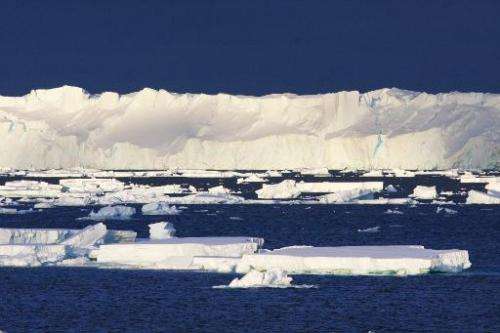A beginner's guide to speaking "Climate"

Outsiders who walk into a UN climate conference often experience a "beam-me-up-Scotty" moment.
Like Star Trek's Captain Kirk, they find themselves in a alien world where the people speak "Climate", a language as unsettling as Klingon... and nearly as impenetrable.
Veteran speakers know a BINGO from a TUNGO. An ENGO from a YOUNGO. A NAMA from a NAPA. A COP from a MOP.
They read "non-papers" about hot air, and talk wistfully about the days of the QUELRO. And they understand that Bottom Up versus Top Down is not smut—it's about alternative approaches to climate policy.
A new six-day round of negotiations opened in Geneva on Sunday, a stepping stone to a conference in Paris in December where a post-2020 deal must to be sealed.
Here's a primer on what negotiators are saying:
ADAPTATION: Measures to help cope with climate impacts, such as building reservoirs as a defence against drought or sowing crops resistant to higher temperatures.
ANNEX I & ANNEX II: A division between rich and developing countries enshrined at the founding of the UNFCCC in 1992. The two lists define burden-sharing on climate change, with most responsibility on Annex I nations.
AOSIS: Association of Small Island States (AOSIS) highly vulnerable to sea-level rise.
AR5: The newly published Fifth Assessment Report of the UN's Intergovernmental Panel on Climate Change (IPCC), the top expert authority on global warming and its impacts.
BAU: Business as usual. Used for projections of global warming based on current carbon emission trajectories.
BASICs: Bloc comprising Brazil, South Africa, India, China.
BINGOs: Business and industry non-governmental organisations. ENGOs, TUNGOs and YOUNGOs are environment, trade union and youth NGOs.
BOTTOM-UP/TOP-DOWN: Bottom-up means non-binding, voluntary targets on emissions cuts. Top-down means a global target divided among parties who sign up to binding commitments—the now unpopular approach used under the Kyoto Protocol.
CAP AND TRADE: Buying and selling unused carbon emissions quotas under a cap, or ceiling, imposed on a country, region or industrial sector.
CARBON INTENSITY: How much fossil fuel you burn to produce an economic unit—in other words, a measure of energy efficiency. Used by China to define its action on carbon.
CBDR-RC: Common but differentiated responsibility and respective capabilities, a phrase enshrined at the founding of the UNFCCC. It means countries should fight climate change on the basis of their individual circumstances, wealth and other resources—a thorny issue today as China, Brazil and India are now huge carbon emitters.
CCS: Carbon capture and storage, a fledgling technology to siphon and store carbon dioxide from power plants to stop it adding to the greenhouse effect.
COP: Conference of Parties, the supreme body of the UN Framework Convention on Climate Change (UNFCCC). The November 30-December 11 meeting in Paris will be COP 21.
GCF: Green Climate Fund (GCF), designed to channel potentially hundreds of billions of dollars in climate aid to poor countries.
GHGs: Greenhouse gases
G77 AND CHINA: Gathers developing countries—134 in all—which negotiates as a bloc in the climate talks. It is also divided into sub-groups along the lines of their differing interests.
HOT AIR: Surplus of greenhouse-gas quotas developed countries were allotted under the Kyoto Protocol.
INDCs: Intended Nationally Determined Contributions. Voluntary emissions-curbing pledges that must be put forward this year to provide the backbone of the 2020 climate deal.
KP: Kyoto Protocol, the 1997 accord on carbon emissions that will be superseded by the 2020 deal.
LDCs: Least Developed Countries.
LMDCs: Like-Minded Developing Countries.
LULUCF: Land Use, Land-Use Change and Forestry. A KP provision to count trees as "sinks" which absorb carbon dioxide, a hugely vexatious issue.
MITIGATION: Measures to reduce or slow emissions of greenhouse gases.
MOP: Meeting of Parties under the Kyoto Protocol.
MRV: Measurement, reporting and verification. A benchmark of transparency for.
NAMAs and NAPAs: Nationally Appropriate Mitigation Action and National Adaptation Programmes for Action. Initiatives to help LDCs ease carbon emissions or strengthen climate defences.
NON-PAPER: An informal document used to float possibly controversial ideas.
QUELRO: Quantified Emission Limitation and Reduction Obligation. A pre-INDC carbon pledge.
REDD: A forest programme (Reducing Emissions from Deforestation and Degradation).
© 2015 AFP

















